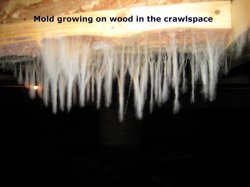Many times we’re asked the exposure limits to black mold. Unlike other indoor pollutants, there are no exposure limits to mold. Exposure limits to mold would be difficult to set because human beings differ in their susceptibility to mold. Similarly, the molds themselves differ in their ability to cause health problems.
Molds may affect human beings in three different ways:
- Allergenicity
- Infection
- Toxicity
As concerns common indoor molds the most likely effect is allergenicity. Very few fungi (molds and yeasts) are known to cause infection to healthy individuals. Toxicity is most likely to occur if one eats food contaminated with the fungal toxins. While toxicity is also possible through inhalation of spores or dust containing toxins, little is known about this possibility.
Generally, elderly people, infants, sick people and other individuals with weak immune systems are at higher risk of suffering from mold exposure related diseases than healthy people.

